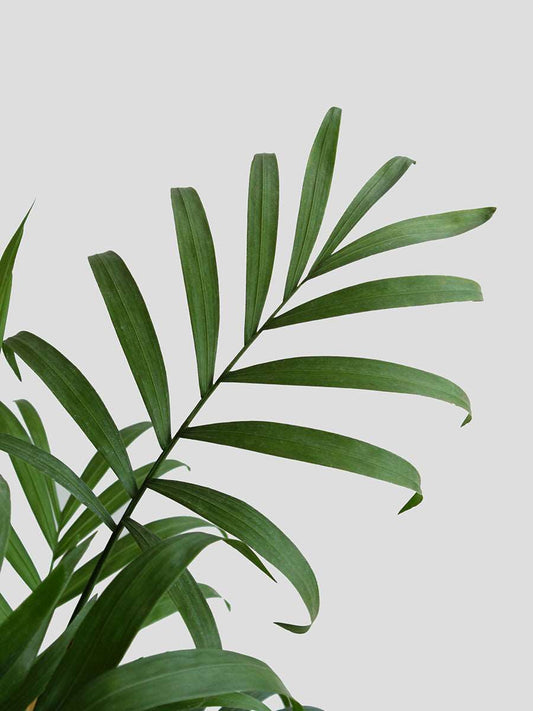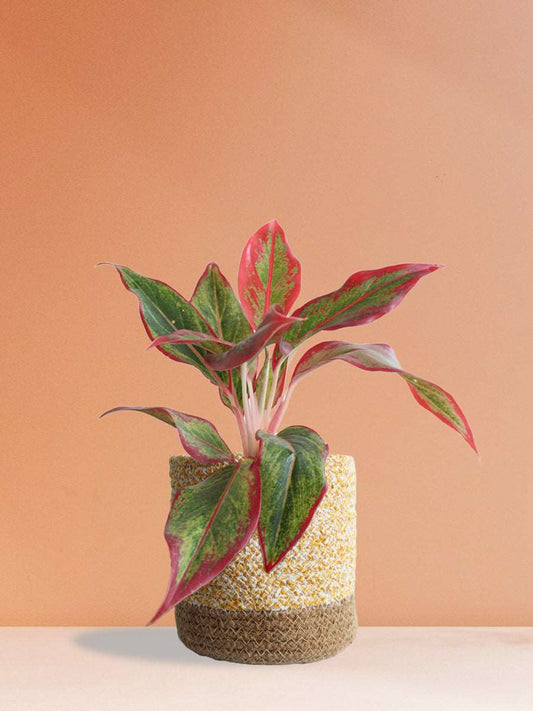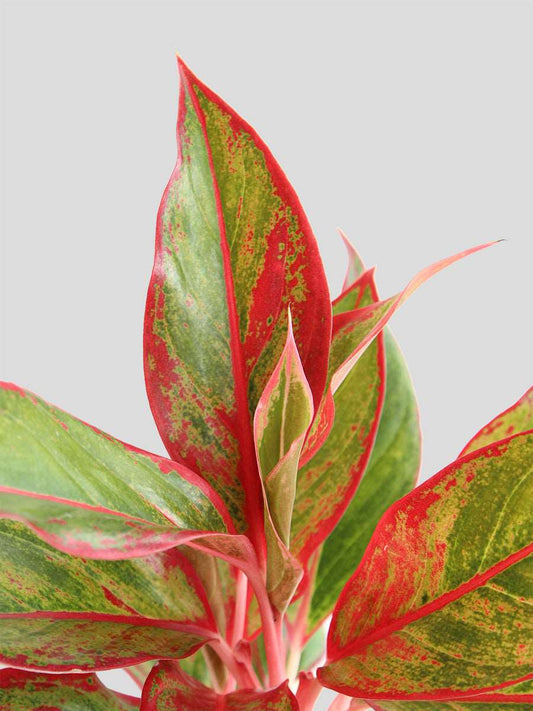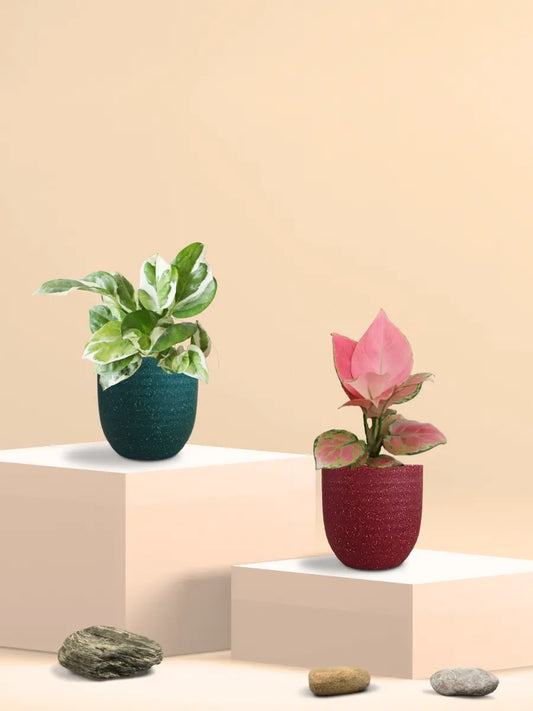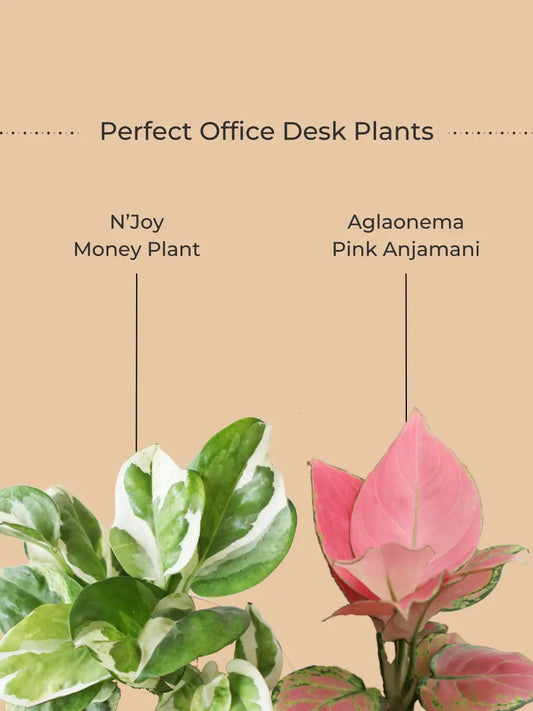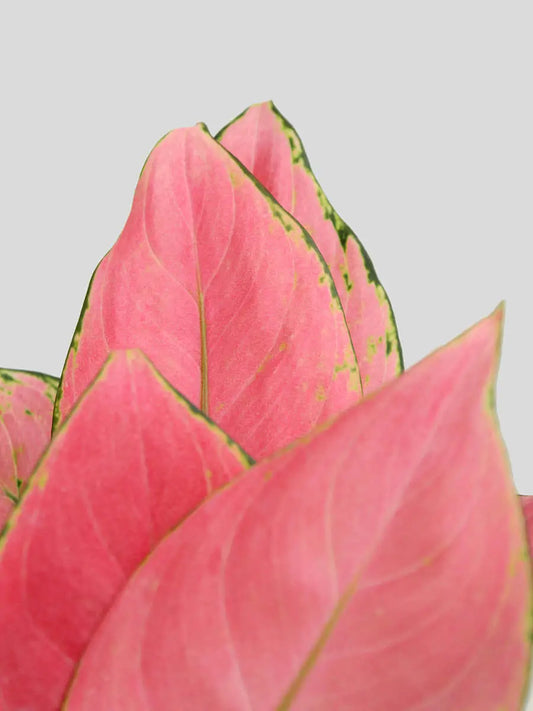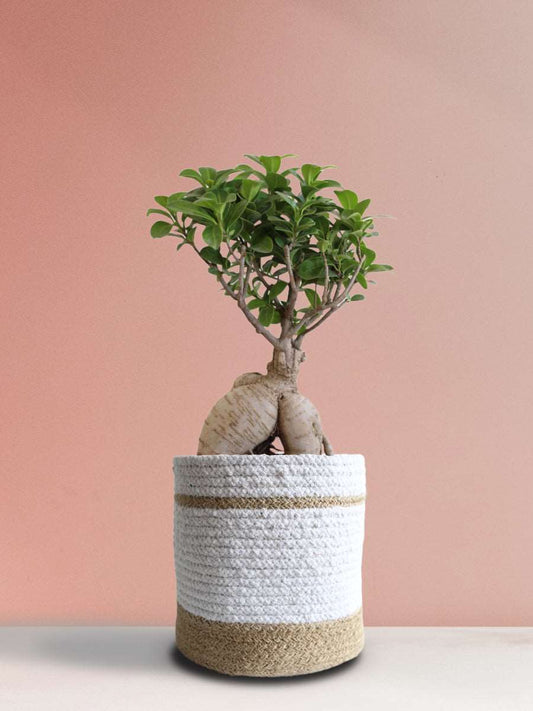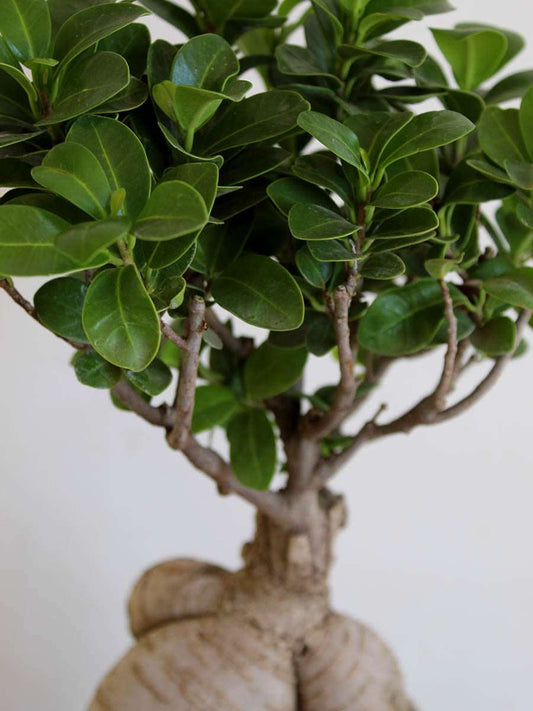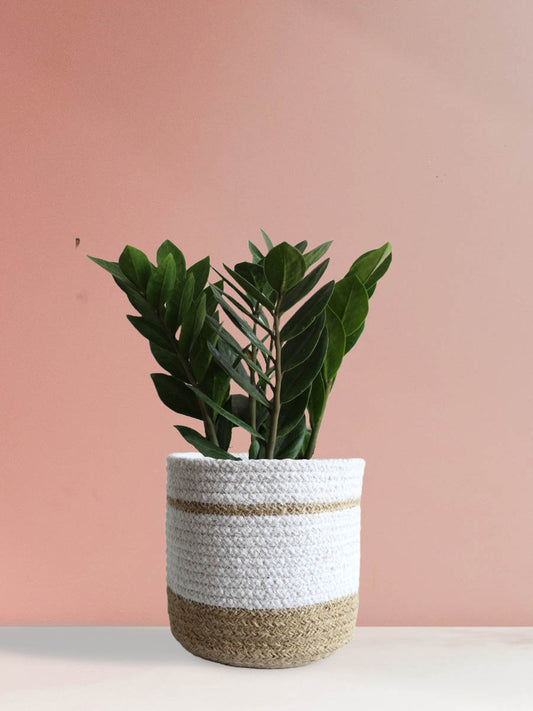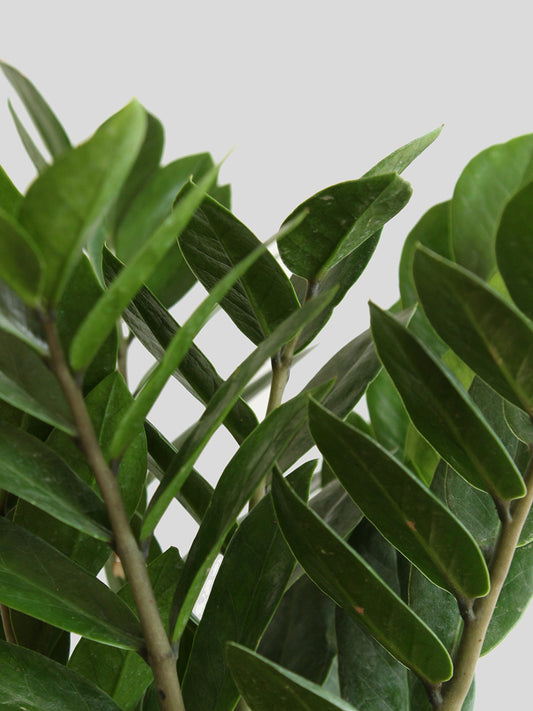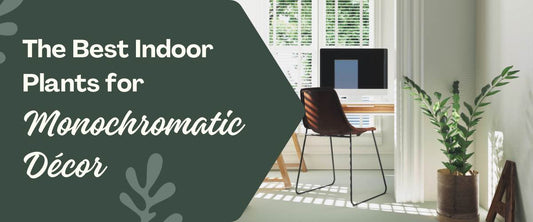Ultimate Guide on Betel Leaf Plant
Did you know that people have been eating betel leaves, which are also called "Paan leaves," since about 400 BC? They are often eaten after a meal as a paan, which is a betel leaf filled with chopped betel nuts. This is likely due to its minty taste & digestive benefits.
According to the scientific name Piper betle, the betel plant is a vine that belongs to the Piperaceae family. It has beautiful dark glossy green heart-shaped leaves that are grown in India, Sri Lanka, Malaysia, the Philippine Islands, & Indonesia.
To learn more about this plant in its indoor environment, read on.
How to Grow a Betel Leaf Plant at Home?

October is the best time to grow Betel leaf plants. To Grow Betel Leaf Plant at Home:
- Use a deep pot with slightly acidic, sandy soil to grow betel plants.
- Keep the soil wet yet well-drained, watering approximately every 4 days
- In warm weather, keep betel plants outside & in cold weather, bring them inside.
- Every two months during the growing season, use nitrogen-rich organic fertilizer or manure.
- If you see roots developing, it's time to move the plant to a larger pot or plant it in your outdoor space.
- After 4-6 months, the betel plant will be ready for harvesting. During harvest time, hand-collect mature Betel leaves. Then wash & clean to enjoy its health benefits.
How to care for a Betel Leaf Plant?

The following recommended maintenance steps to care for Betel Leaf Plant include:
1. Sunlight:
Partial shade is ideal for betel leaf plants. Due to their solar sensitivity, betel leaf plants need shade to thrive. For best results, position your betel leaf plants in a well-lit spot with indirect sunlight & a few hours of early sunlight.
2. Watering:
Betel leaf plants need regular watering to thrive. For optimal growth, keep them moist even though they dislike it. In summer, water the plant more often & thoroughly, but don't overwater while raining, bring your betel plant indoors to prevent the roots from decaying. Check the topsoil before you water in the winter.
3. Soil Requirement:
To maintain the health of your betel leaf plant, you should select well-draining & organic soil. Be careful while choosing soil because they mainly dislike moist soil. Also, pick a pot with a drainage hole to let water flow & prevent soil saturation. Betel leaf plants prefer light, not constant moist conditions.
4. Fertilization Timing:
Betel leaf plants thrive best when administered rich organic fertilizer & a balanced fertilizer every 20 days during the main growing seasons. Before applying fertilizer, dilute it with water to avoid damaging the plant & its roots.
Also Check This: How To Bring Your Homes Closer To Nature
What is the significance of betel leaves in Hinduism?

Betel leaves are essential to the religion & culture of Hinduism. They have special significance in many religions & are often used in religious ceremonies. People pay respect to gods by offering them betel leaves, which are believed to have purifying properties.
Hindu tradition believes Shiva & Parvati live in betel leaves. Because of this, offering betel leaves to the gods is a sign of great good fortune. People who consume betel leaves believe they will protect them & bring them good fortune.
Even since Vedic times, Hindus have adored betel leaves & used them in traditional Indian medicine & ceremonies. Ancient Ayurvedic texts, including Charaka, Sushruta Samhitas, & Kashyapa Bhojanakalpa, describe the health benefits of betel leaves. They were utilized in ancient Chinese medicine to detoxify the body, neutralize free radicals, & prevent genetic mutations. Many researches have shown that betel leaves can treat diabetes, heart disease, inflammation, ulcers, liver protection, & infections. Betel leaf extracts & isolated compounds are patented for medical use. Since ancient times, areca seeds & betel leaves have been employed as stimulants. It was believed that areca seeds promoted fertility.
However, overtime, tobacco & other chemicals have influenced changes in traditional chewing behavior. Current products most frequently contain tobacco, areca seeds, & slaked lime (liquid). Despite widespread historical consumption, there is no proof that betel leaf chewing causes oral cancer.
Note that "paan" is different from betel leaves. Extra sweeteners & agents make paan leaves taste better, but they may cause mouth infections over time.
Benefits of Betel Leaf Plant

Vastu Benefits of Betel Leaf Plant
According to Vastu, putting a betel leaf plant in your home can bring good energy, peace, & wealth. Betel leaves are lucky & are linked to the goddess Lakshmi, who is the goddess of wealth & abundance. They best thrive in north- or east-facing locations that receive bright indirect light throughout the day & a few hours of morning light.
Health Benefits of Betel Leaf Plant
Betel leaves, because of their essential oils, phytochemicals, & phenols, help the body fight off bacterial infections. Not only gram-negative bacteria but also gram-positive bacteria can be inhibited by betel leaves. Gram-positive & Gram-negative bacteria cause infections differently. Gram-positives have a thick cell wall, while Gram-negative have a thinner, impenetrable outer membrane, making them resistant to antibodies. According to research, the MBC/MIC ratio showed P. betle leaves' bactericidal & bacteriostatic properties, whereas MFC/MIC exhibited fungicidal & fungistatic effects.
1. Good for digestive tract:
Betel leaves in India are popularly chewed after meals for better digestion & mouth freshening due to their exotic minty flavor. Why? Essential oils such eugenol, terpene, camphene, betel phenol, chavicol, etc., as well as several kinds of vitamins, minerals, & elements including iodine, potassium, vitamins A, B1, & B2, & nicotinic acid, can be found in it.
Additionally, the phytochemicals in betel leaves have anti-ulcerogenic properties, which prevent the formation of ulcers, which cause damage to the gut lining, & increase the secretion of gastric mucus when chewed.
To maximise Betel Leaf Planthealth benefits, create smoothies, cook with powder, or mash into a paste.
2. Beneficial to diabetic patients:
Herbal medicines made from betel leaves can help keep blood sugar in check over time, especially in people with type 2 diabetes mellitus. The leaves also have antioxidants that help the body fight oxidative stress. This is among the most significant advantages of betel leaf.
Benefits of Betel Leaf Plant for Female
Betel leaf, according to traditional medicine, helps women by increasing their milk production & decreasing or eliminating vaginal discomfort. They were additionally considered to boost fertility in women by keeping their ovaries healthy.
Also Check This: Small Indoor Plants For Your Apartment
1. Reduce LDL-cholesterol:
Researchers have found that betel leaves can lower triglyceride, LDL, & HDL cholesterol levels. High cholesterol levels are linked to a higher risk of heart disease & stroke, so lowering cholesterol levels is one way that these natural substances can help you live longer.
2. Act as a natural antidepressant:
antidepressant drugs that we often take are considered to have significant negative effects in the long term. However, phenols content in betel leaves have the ability to act as a natural antidepressant to increase the release of catecholamine in the body, which minimises the risks of depression.
3. Promoter of excellent oral health:
Chewing betel leaves may help prevent oral infections by suppressing the growth of some bacteria in the mouth. Oral infection often occurs because the acids in high-sugar foods & drinks can combine with the acid produced by some salivary bacteria, causing an infection of the gums and/or teeth.
4. Avoiding the onset of asthma attacks:
Asthma attacks can be mitigated to some extent due to the anti-inflammatory properties of the compounds (polyphenols) present in betel leaves. The anti-histaminic compounds in betel leaves can reduce histamine, a key factor in bronchial constriction.
5. Potential in treating cancer:
Scientists have found that phytochemicals in betel leaves can lower the chance of getting some types of cancer. The leaves also have many antioxidants that help lower oxidative stress, which is known to play a role in cancer.
6. Healing wounds:
Betel leaves' antioxidants speed up the healing process for wounds, especially burn wounds, which might take a long time because of oxidative stress. Additionally, they act as a natural antibacterial that promotes healing by putting the leaves directly to wounds, cuts, & rashes while also relieving discomfort.
7. Other Health Benefits:
According to several scientific research, Betel Leaf Planthas been demonstrated to alleviate pain & inflammation, boost immunity, & supply essential nutrients like vitamin C, riboflavin, thiamine, niacin, & carotene. It's also a healthy & refreshing way to beat the heat this summer because to its high water content, minimal fat, & low calorie count. Additionally, it reduces the risk of chronic diseases such as heart disease, excessive blood pressure, & iron deficiency.
Also Check This: Metal Planters Vs Ceramic Planters Pros & Cons: Which Is Better?
Conclusion
The Betel Leaf (Paan) is a popular plant in India, where it is revered for its medical benefits & beautiful heart-shaped leaves. It's simple to grow, & once you do, you'll have something you can use to make the beloved dessert paan, as well as something you can display proudly in your house.





